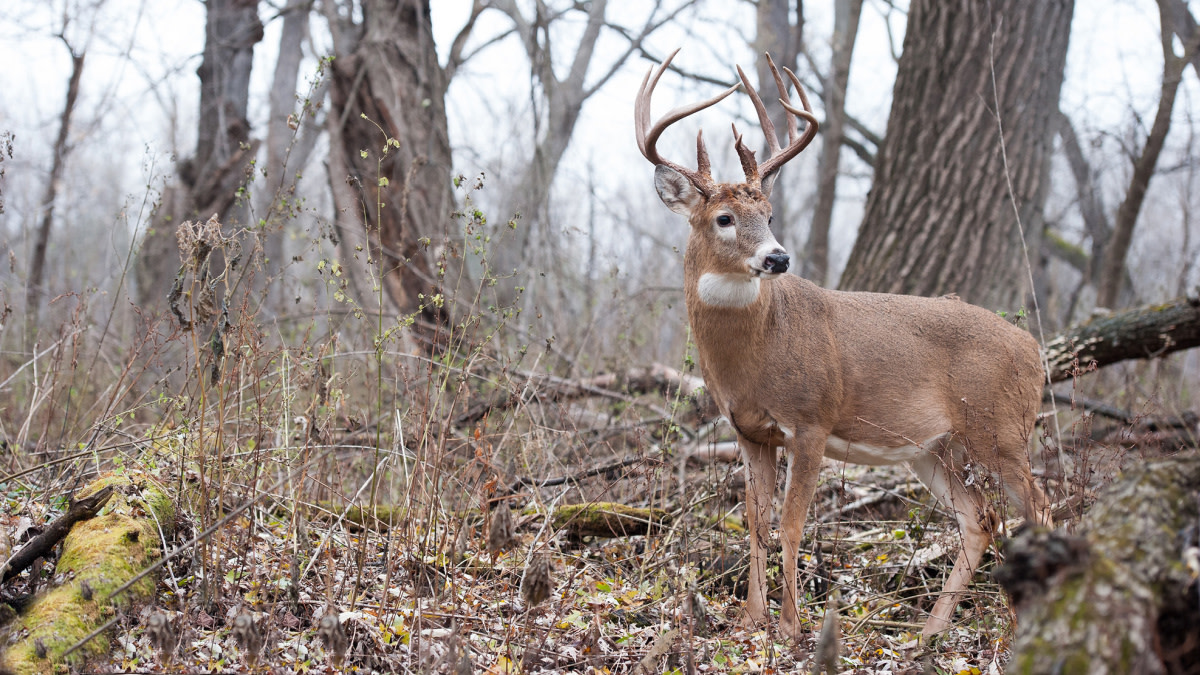
Every hunter knows that deer are attracted to acorns but knowing when and how to target an acorn browse pattern is a refined skill. The acorn crop varies from year to year, depending on environmental factors, which adds to the difficulty in targeting acorn browsing patterns.
On a micro level, the acorn crop will vary even further, depending upon the orientation, age, and environmental conditions of that tree’s location. As difficult as it may be, pinpointing a hot and heavy acorn browsing pattern just might be the final detail needed to arrow a big woods whitetail.
What, When, and Where
Kentucky native Josh Honeycutt is no stranger in the outdoor space and is a walking whitetail database. “Hard mast, such as acorns, have serious influence over deer behavior,” Honeycutt said. “These usually begin dropping in early or mid-September, changing deer patterns in the blink of an eye. When scouting, look for white, red, black, water, pin, post, and all the other oaks that generally grow where you hunt. Target the varieties with lower tannin (bitterness) levels, such as those in the white oak family. Deer prefer these over less-tasty subspecies.”
As deer hunters spread across North America, there’s no hard and fast rule of thumb when it comes to targeting a deer’s browse pattern. Whether you hunt the big woods of Pennsylvania or an isolated oak draw in the Midwest, deer will target acorns when readily available.
“On a broader scale, in the Midwest, deer eat green soybeans and other crops all summer and early fall,” Honeycutt said. “Then, they shift to hard mast crops, such as acorns and chestnuts. Soft mast, such as apples, pears, persimmons, and plums, also become viable. Afterward, it’s back to waste grains, standing crops, food plots, etc.”
In a nutshell, deer are wild animals and need to find the best food sources available, 365 days a year to survive. When hunting deer in a big woods-type environment, palatability and preferability of food sources can change nearly on a weekly basis.
“All food factors considered, don’t be surprised when changing food sources spark a sudden shift in patterns. This is part of the October lull misconception,” Honeycutt said.
Scouting Strategy
When targeting oak trees, there are digital tools that you can use to begin your search. Satellite imagery on certain platforms, like Google Earth Pro, allows you to change the imagery date so that you can identify deciduous versus evergreen trees by selecting an imagery date during the winter in which leaves have fallen from deciduous varieties.
Other platforms, such as OnX, have filters in which some locations across the US have been mapped to identify different hardwood species, such as the oak. However, this is merely a starting point. Finding mast-producing trees in real-time, concurrent with your hunting trip, really needs to be done via good old fashion boots on the ground in-season scouting.
Target any areas with known hardwood trees and do a visual inspection for fresh acorns on the ground, empty acorn shells, and fresh scat. Coupling this intel with a known bedding area, water source, or the first rubs of the season, and you might have found the spot on the spot.
Where I primarily hunt in the Midwest, oak trees tend to grow in shaded north-facing hillsides and mid-elevation in hilly terrain, sometimes encroaching upon upper wetland and or creek drainage habitats.
Mobile Approach
After you’ve put in the time and effort to find the best mast-producing trees, a fast and easy mobile hunting setup can be the final piece of the puzzle.
“It’s important to be mobile,” Honeycutt concluded. “Don’t get pigeonholed into a bad or mediocre spot. Instead, carry afield a lightweight climber, or lock-on with climbing sticks, and hang it in a spot that looks best. I tagged my biggest buck ever using this method.”
Like all hunting, sometimes you think you’ve solved the equation, only to come up empty-handed. If you find a spot that appears to have all the right ingredients, consider throwing up a trail camera to get additional intel. Because patterns change quickly throughout the season, check the camera early, or let the cameras soak and use the information to make yourself better informed for next season. During the fabled October lull, keep scouting, remain mobile, and continue adapting strategies and locations until you find yourself in the right place at the right time.
Feature image via Matt Hansen.








Conversation